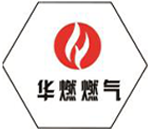
Dec . 01, 2024 18:43
Back to list
gas regulator
Understanding Gas Regulators Essential Components for Safety and Functionality
Gas regulators play a crucial role in the safe distribution and regulation of gas pressure in various applications, ranging from residential heating systems to industrial machinery. These devices ensure that gas flows consistently and safely to its intended destination, preventing potential hazards associated with gas leaks and pressure fluctuations. In this article, we will explore the fundamental aspects of gas regulators, their operation, types, and importance in everyday life.
What is a Gas Regulator?
A gas regulator is a device designed to control the pressure of gas from a source—such as a gas cylinder or pipeline—to a usable level in equipment or appliances. Essentially, it reduces the high-pressure gas to a lower pressure, ensuring that gas is delivered at a safe and manageable level for users. This regulation is crucial as it protects appliances from damage and maintains efficient operation.
How Do Gas Regulators Work?
Gas regulators operate based on the principles of pressure and flow control. They feature a diaphragm that reacts to fluctuations in incoming gas pressure. When the pressure from the gas source changes, the diaphragm moves accordingly, adjusting the size of the opening through which gas flows. This automatic adjustment allows the regulator to maintain a constant outlet pressure, regardless of changes in the supply pressure.
The key components of a gas regulator include
1. Inlet and Outlet Ports These are the connections where gas enters from the source and exits to the application.
3. Adjustable Spring This component helps set the desired outlet pressure by providing resistance against the diaphragm's movement.
4. Vent Some regulators have a venting system that releases excess pressure to the atmosphere, ensuring safe operation.
Types of Gas Regulators
Gas regulators come in various types, each designed for specific applications
gas regulator

1. Single-Stage Regulators These are used for applications where the incoming pressure is relatively constant. They provide a single step-down from source pressure to outlet pressure.
2. Two-Stage Regulators These are used when incoming pressure is varied or when a more precise outlet pressure is required. They offer two stages of pressure reduction, enhancing stability.
3. High-Pressure Regulators Designed for high-flow applications, such as industrial settings, these regulators manage large volumes of gas at elevated pressures.
4. Low-Pressure Regulators These are typically used in residential settings for appliances like gas stoves and water heaters, ensuring a safe and stable supply of low-pressure gas.
The Importance of Gas Regulators
The significance of gas regulators cannot be overstated. They are essential for safety, efficiency, and compliance with regulatory standards. Here are some of the reasons why gas regulators are critical
- Safety By maintaining optimal pressure levels, gas regulators prevent explosions and fire hazards associated with gas leaks or too high pressure.
- Equipment Protection Appliances designed for specific pressure levels can be damaged or malfunction if exposed to excessive pressure. Regulators ensure the safe operation of these devices.
- Energy Efficiency Proper regulation of gas flow leads to more efficient combustion, reducing waste and lowering fuel costs for consumers.
- Environmental Protection By preventing leaks and ensuring efficient combustion, gas regulators play a role in minimizing greenhouse gas emissions and environmental impact.
Conclusion
In conclusion, gas regulators are vital devices that ensure the safe and efficient use of gas in various applications. Their ability to control pressure and flow protects both users and equipment while enhancing energy efficiency. Understanding how these regulators work and the different types available can help individuals and businesses make informed decisions regarding their gas supply needs. As technology advances, the design and functionality of gas regulators continue to evolve, promising even greater safety and efficiency in the years to come.
Latest news
-
Safety Valve Spring-Loaded Design Overpressure ProtectionNewsJul.25,2025
-
Precision Voltage Regulator AC5 Accuracy Grade PerformanceNewsJul.25,2025
-
Natural Gas Pressure Regulating Skid Industrial Pipeline ApplicationsNewsJul.25,2025
-
Natural Gas Filter Stainless Steel Mesh Element DesignNewsJul.25,2025
-
Gas Pressure Regulator Valve Direct-Acting Spring-Loaded DesignNewsJul.25,2025
-
Decompression Equipment Multi-Stage Heat Exchange System DesignNewsJul.25,2025

